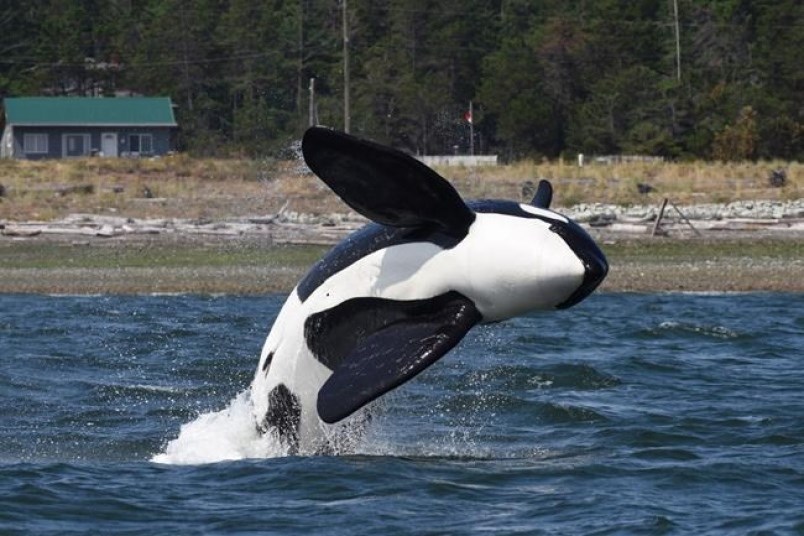Fisheries officials have tricked a killer whale into finally leaving Comox Harbour after more than a week by luring it away with audio recordings of other orcas.
In a rarely used and potentially dangerous technique, the officers lowered speakers into the water from a boat outside the harbour Thursday. They then played a recording made a couple of years ago of whales that were known to “hang out” with the one that refused to leave Comox.
The ploy worked to perfection, the officials said. The whale responded immediately and raced toward the speakers.
”At one point, he was porpoising out toward where the sound source was at about 10 or 11 knots,” said Jared Towers, a killer whale technical expert with the Department of Fisheries and Oceans.
“So he was quite visibly excited by those calls.”
The officers used two boats – one to monitor the whale’s behaviour, the other to play a snippet of sound and then move further out into the ocean and play a bit more.
“We had to be in constant communication there to make sure that we didn’t have the recording on when the animal got to us, because we weren’t sure what the outcome would have been,” said Paul Cottrell, a marine mammal coordinator.
Once lured away from the harbour, the whale spent about 30 minutes off Cape Lazo before heading north into open water.
Towers and Cottrell said they were thrilled with the outcome of their plan, which was hatched with the help of numerous groups and advisers, including noted whale expert John Ford and Peter Hamilton of Lifeforce Ocean Friends.
“We’ve been doing high-fives,” Cottrell said. “It’s one of those things where you put a plan together, you get the right experts in the room and you know the probability of it actually working is quite low. And you could have a worse outcome in certain respects … there’s so many variable involved.”
However, he added, “When it works and it works well – to date, at least – it’s just tremendous. We were talking earlier – you don’t get many days where that happens and it works out.”
The officials said the technique was used successfully only once before, and remains largely experimental.
“One thing we want to emphasize is that this playback is done under licence and it can be very dangerous if not done appropriately, because the animals can act aggressively as well,” Cottrell said.
The officials decided to try it Thursday because of safety concerns for the public and the whale, which had been interacting with vessels in the harbour.
“After about the first day, we started to become concerned just because that’s such unusual behaviour for a killer whale of any kind,” Towers said.
He said there have been four other instances in the since the early 1980s of a lone killer whale staying in places for extended periods after getting separated from their pods.
“This is the only one we’ve had of an adult killer whale. We certainly expected him to leave on his own, but he just needed a little bit of help to do it.”



